NuTone QTREN, QTXN, QTRN, QTXEN User Manual
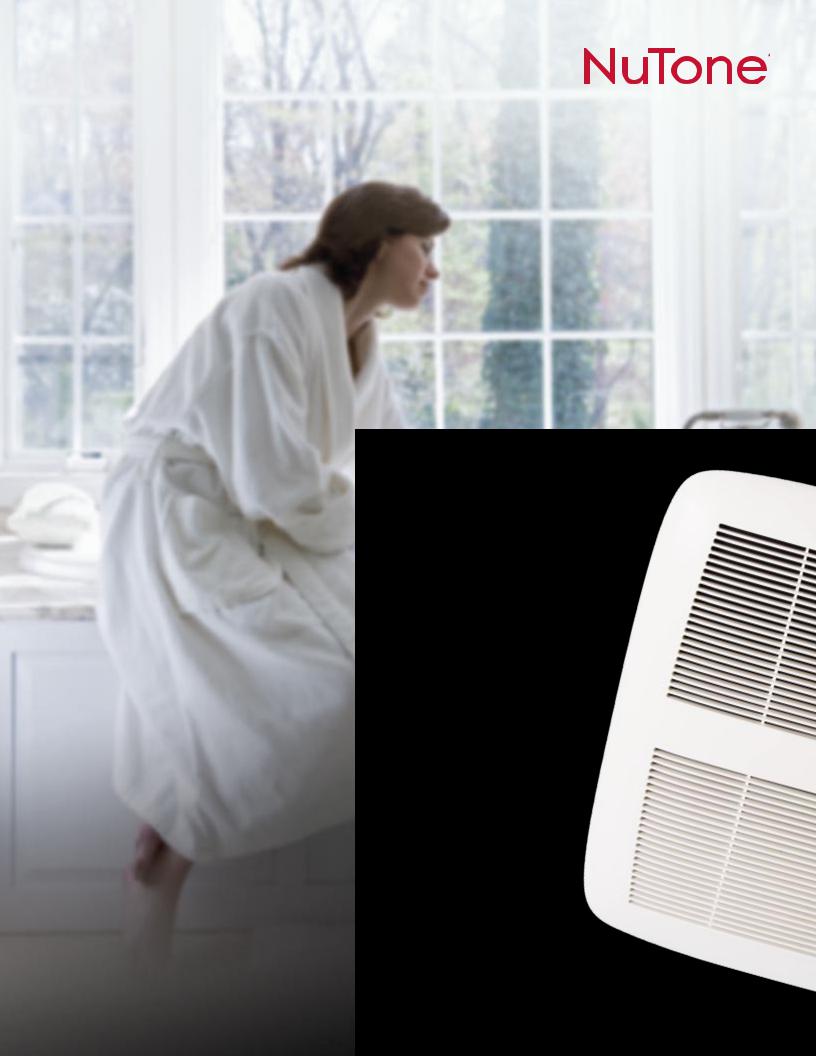
Ventilation Fans
October 2008
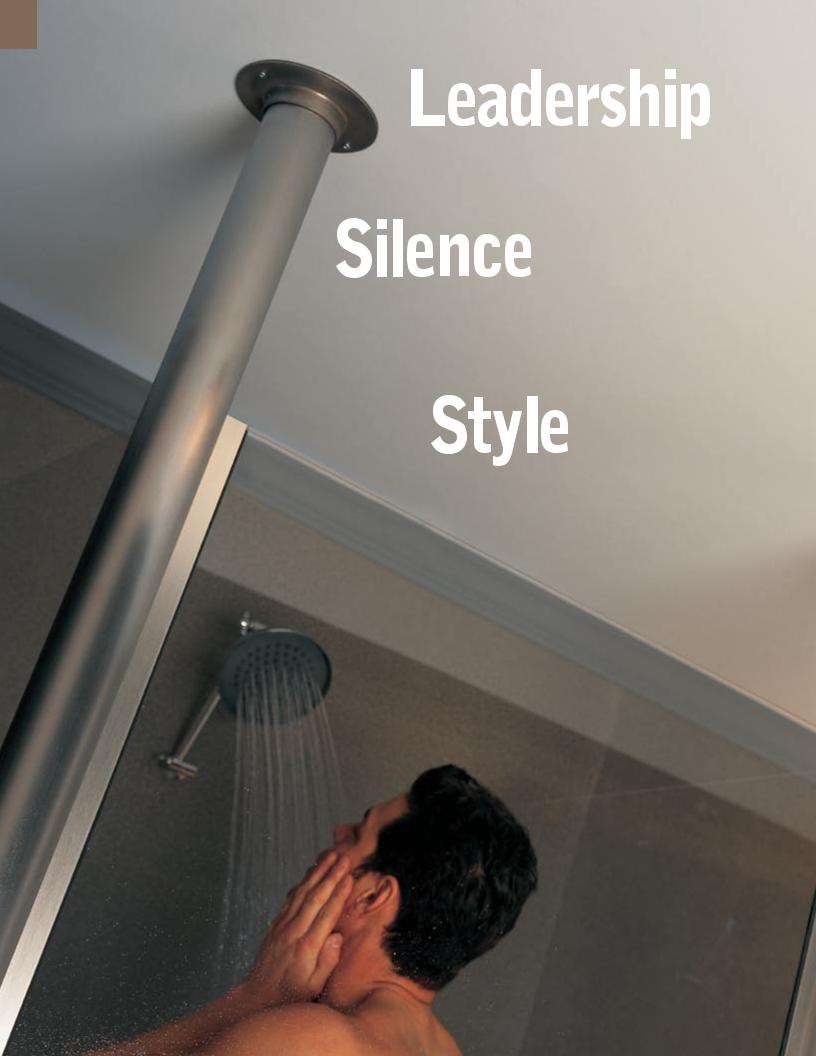
Leadership is measured in all kinds of ways. At NuTone it’s defined with innovative home amenity products that make life more comfortable.Trust us to develop it first, and develop it best.
Silence is what consumers demand more than any other feature in a bath fan.We hear you, and proudly offer the Ultra Silent™ Series, the most quiet ventilation fans available. Proven in real-world installations, they deliver what we promise on the package.
Style can be difficult to define. What’s compelling to one may be passe to another. NuTone solves the issue with a broad variety of product styles, finishes, and shapes—all designed around you.
We don’t build products. We build the industry.
2
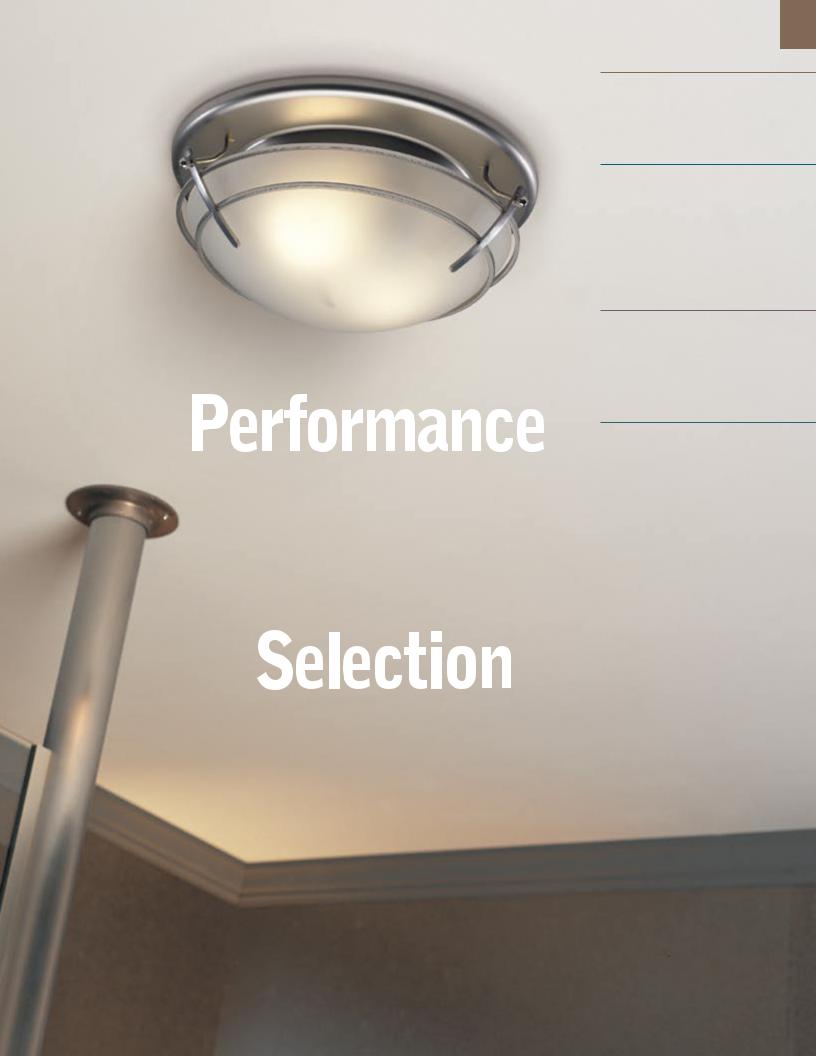
Powerful operation is the ultimate test. And a clear bathroom mirror after a long relaxing shower is the true measure of bath fan performance.That’s why NuTone engineers the right product for every type of application, room size and need.
No one provides a broader selection of home ventilation products than NuTone. From the spot ventilation and heating solutions listed above to our beautiful ceiling fans, trust NuTone to improve the comfort of your family and home.
4–5 Selection Guidelines
6–7 Installation/Sizing Guide
8–9 Questions & Facts
Single-function
10–13 Ultra Silent™ Fans
14Bath Fans, Fan Upgrade Kit
15Heavy Duty Fans, Radiation Dampers
16–17 Utility Fans
18–19 In-Line Fans
Multi-function
20–21 Ultra Silent™ Fan Lights
22–25 Fan/Lights
25 Heavy Duty Fan/Lights
26–29 Heater/Fan/Lights
Other
30–31 Wall Control Specifications
32Wall Control Selection
33Ducting Accessories 34–35 Specifications Matrix
3
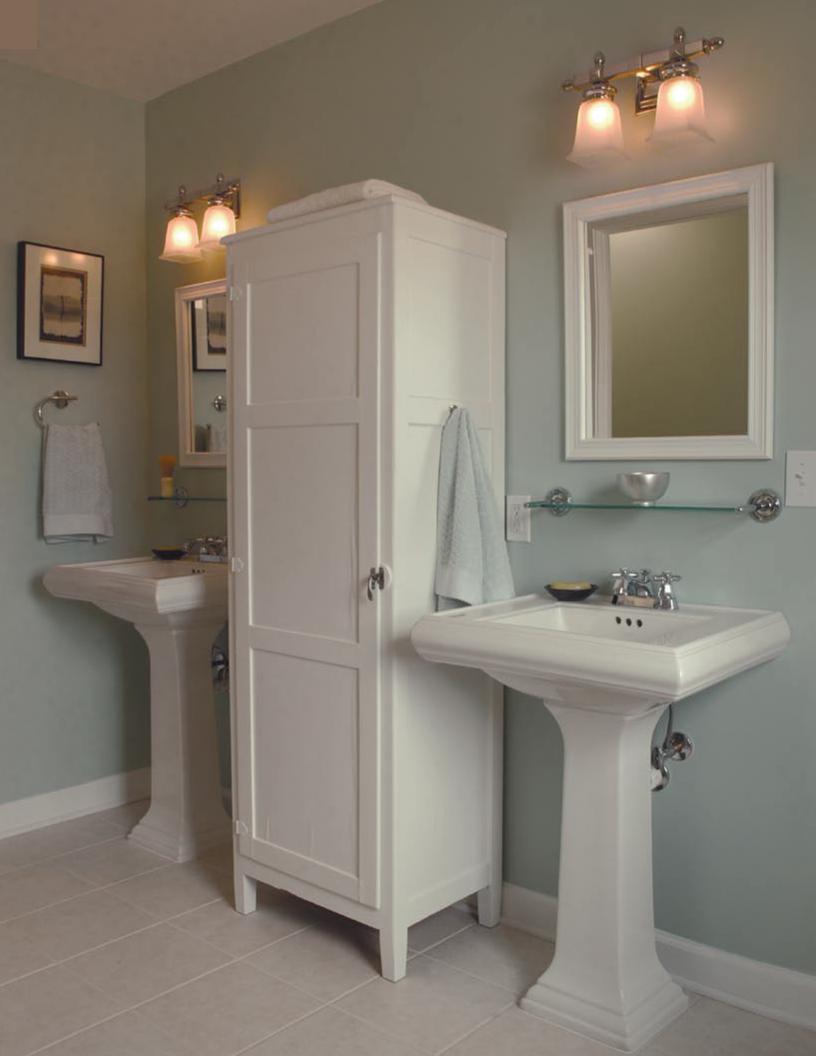
NuTone Ventilation Fans—Selection Guide
NuTone makes the perfect ventilation fan for every home,decor and budget.
4

NuTone Ventilation Fans—Selection Guide
What you should consider when buying a bath fan or home ventilation system.
Steamy mirrors, damp walls and fogged windows.They’re more than annoying.They could indicate developing problems like mold and mildew, ruined insulation, and wood rot. Spot ventilation solutions from NuTone clear the air quickly and efficiently removing potential problems before they invite themselves into your home.
What’s in stays in today’s airtight homes.
Today’s homes are built airtight for efficiency. But that means moisture and airborne pollutants stay where they are unless they are vented away. Eliminating excess moisture keeps your home dry and comfortable and can help avoid mold and mildew. Volatile organic compounds (VOCs) “outgas” from construction materials such as plywood, carpet, fabric, paint, adhesive, insulation and other
common items. Allergens, dust, cooking vapor and what the kids bring home from school are more reasons why good ventilation is critical.
Which product is best suited to my application?
Take a moment to consider what you’re looking for in a spot ventilation product. Do you want quiet operation, a powerful blower, decorative designs or something that’s virtually invisible? Could you use more light, or ventilation in a walk-in closet? NuTone has what you need.
Sones measure the “sound level” of your fan.
A sone is a measurement of sound in terms of comfortable hearing level for an average listener. The lower the sone value, the more comfortable the environment. Sones are not decibels or volume, but rather how sound is “sensed.” One sone is half as loud as two sones, and is equivalent to a quiet refrigerator.
What “HVI certified” means to you.
The Home Ventilating Institute (HVI) is an independent organization that certifies the airflow and sound performance claimed by manufacturers of ventilation products. NuTone certifies every product through HVI to ensure the product you purchase will perform as claimed.
For more information visit www.hvi.org.
Energy Star: Conserve energy and energy expenditures.
If you’re concerned about saving money and energy, choose NuTone bath fans that feature the Energy Star logo.These products use high efficiency motors and lighting that can reduce energy consumption by as much as 65%—all without sacrificing
performance. Learn more about Energy Star at www.energystar.gov.
5
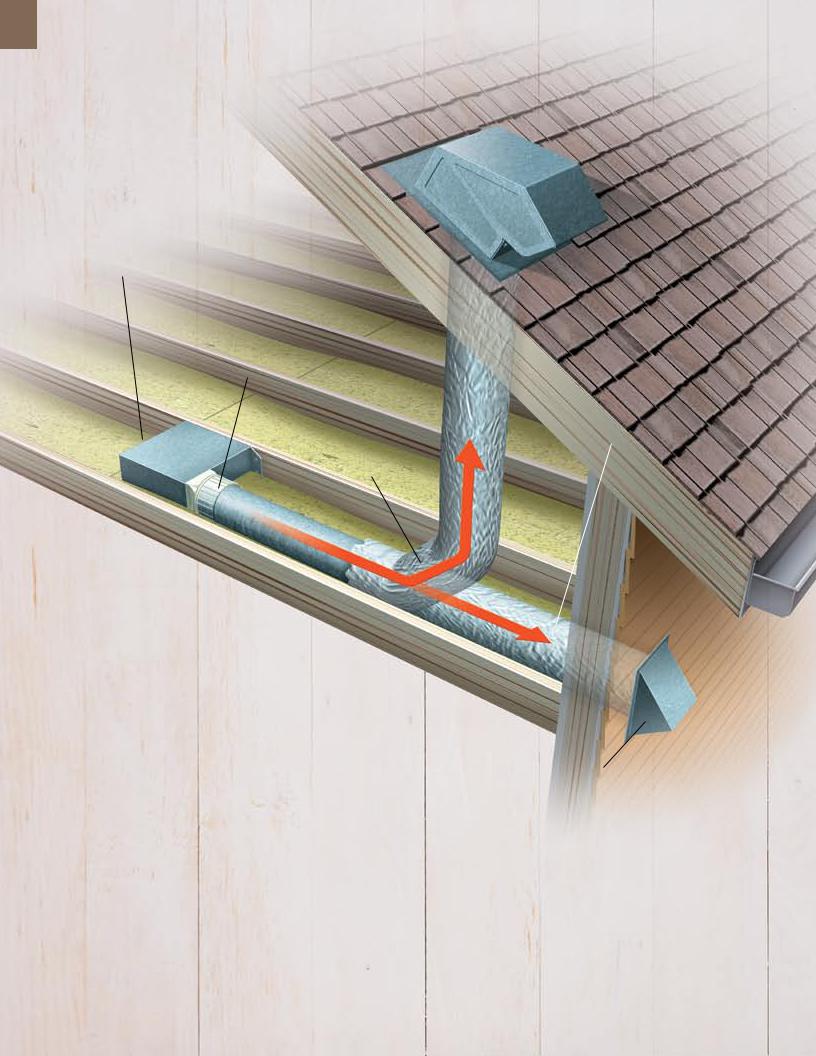
NuTone Ventilation Fans—Installation Guide
Properinstallationmakesallthedifference.
Tape or caulk around the seam where the fan housing meets the sheetrock on the ceiling.
If possible, use smooth, rigid ductwork as large as the exit opening on the body of the fan housing.
Whether rigid or flexduct, the turning radius for the duct should be as large as possible.
Whenever possible, ductwork should slope down and away from the fan housing to direct any condensation toward the vent.
Keyhole slots and alignment tabs facilitate installation, taking the guesswork out of proper mounting.
Elbows, turns, long ducts and ductwork smaller than the fan’s exit outlet will reduce performance.
Use wide aluminum foil or duct tape to join smooth metal ductwork seams.
Do not let flexible ductwork sag as this impedes airflow.
6
During installation, orient the bath fan outlet in the direction of the home’s exit point to minimize duct turns.
Before adding an elbow or bend, allow 24" to 36" of straight run from the fan outlet point.
Duct-wrap insulation (R-5 or above) will help minimize condensation in cold climates, especially on long duct runs.
Exit vents should have backdraft flaps to help keep cold air from entering the duct.
Quick guideline: For bathrooms up to 100 square feet, the HVI recommends ventilation of about 1 CFM per square foot (about eight air changes per hour). For bathrooms over 100 square feet, add up the needs of each fixture to determine the total ventilation rate:
•Toilet 50 CFM
•Shower 50 CFM
•Bathtub 50 CFM
•Jetted tub 100 CFM
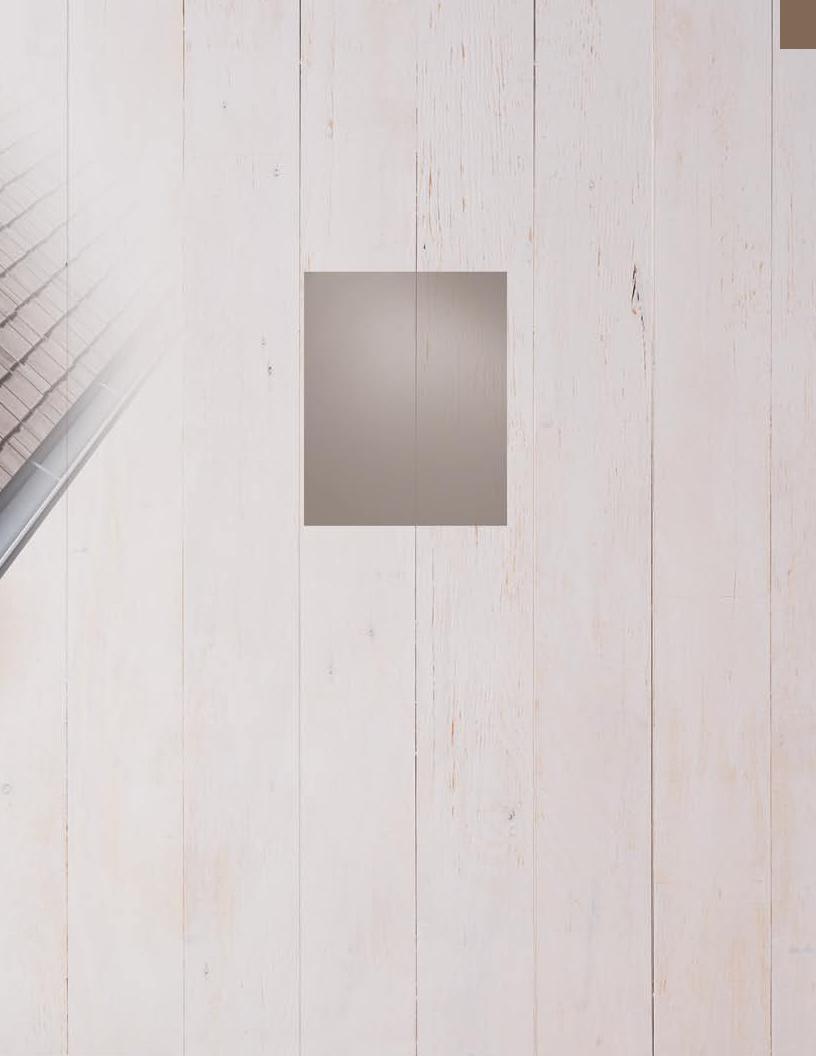
NuTone Ventilation Fans—Sizing Guide
Easy steps for choosing and sizing the right ventilation fan for your home.
Determine which rooms could use ventilation, and how much is needed. Spot ventilation is used in localized areas to remove moisture, odor and airborne pollutants quickly. Most commonly used in the bath or powder room, spot ventilation can also be used in a laundry room, exercise area, closet, or bedroom, wherever air should be changed frequently. Decorative and recessed models can be ideal solutions for these situations. According to the Home Ventilating Institute, Air Changes per Hour (ACH) for comfortable and healthy living should be as follows: Bathrooms:
8 changes, Kitchens: 15 changes, Living/bedrooms: 6 changes. NuTone bath fans, utility fans and high capacity fans meet these needs.
Calculate the air movement necessary for proper ventilation.
Air movement is measured in Cubic Feet per Minute (CFM).To determine CFM requirements, first determine the size of your room. Measure and multiply the length, width and ceiling height of your
room to determine cubic footage. Then use the multiplication factor of
.13 and round up to the next “ten.” See the three examples that follow.
Performance
A good ventilation fan is the product of research, testing and listening to the needs of consumers.At NuTone we build these desires into ventilation products that provide the best mix of power, sound and quality for every budget.
Example 1: Bathroom with 8' ceiling: 7' wide x 9' long x 8' high x .13 = 66. Select a bath fan with at least
70 CFM.
Example 2: Bathroom with 9' ceiling: 10' wide x 9' long x 9' high x .13 = 105. Select a bath fan with at least 110 CFM.
Example 3: For a bathroom with a vaulted ceiling, use the average ceiling height at the wall and the peak:
8' wide x 12' long x ((8' at wall + 12' at peak) / 2 = 10') average height x .13 = 125. Select a fan(s) with at least 130 CFM.
Account for long duct runs
and ductwork that turns before it reaches the exterior vent.
When airflow is restricted in any way it slows down. Just as a car must slow down for a sharp corner, air decelerates when going through a turn in a duct run. Whenever possible, create a straight duct run with large radius turns, if they’re necessary at all. Rigid ductwork is optimal because airflow restriction is minimized. Flexible tubing may be convenient to install, but resistance is created as air is moved over the spiral metal frame of the tubing. With long duct runs or ducts with multiple turns the fan works harder, noise increases and fan performance (CFM) is compromised. Select a fan model with an even greater CFM ratio to compensate.
6" ducting overcomes most performance-related installation issues.
NuTone’s QTXSeries fans deliver high performance in virtually any real-world installation.They are engineered with a 6" duct connector for peak air movement and extremely quiet operation, even when the duct run is not short and straight.
7
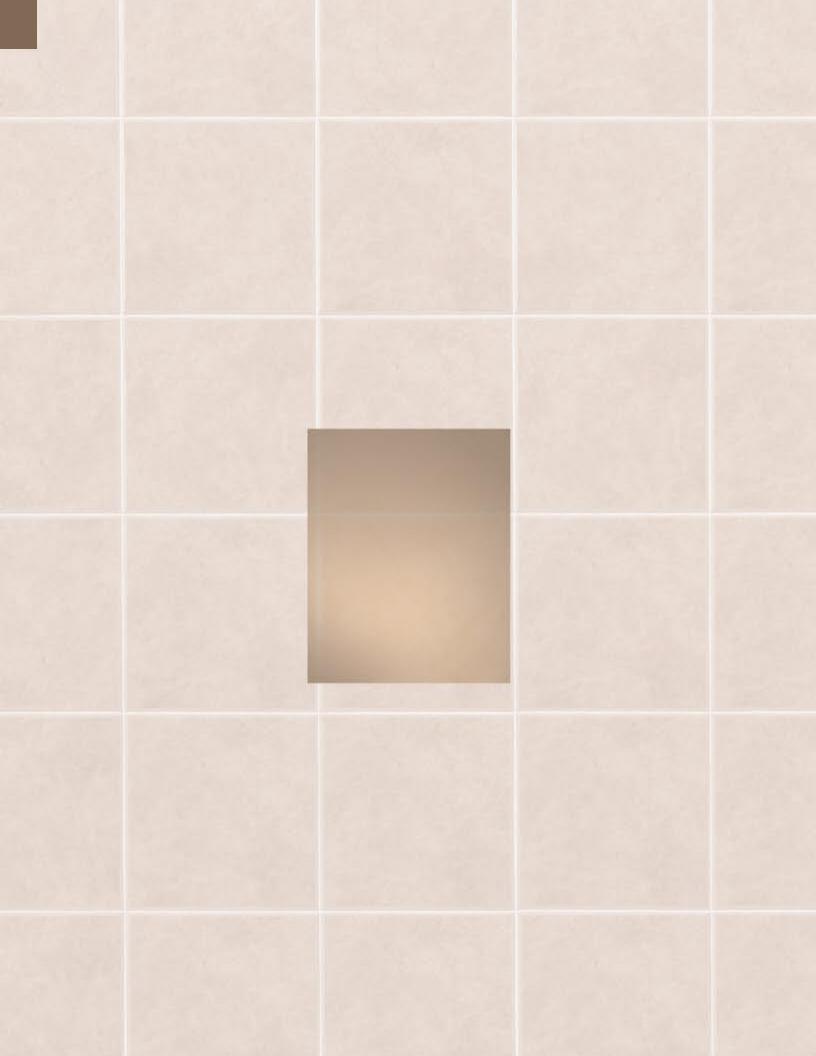
NuTone Ventilation Fans—Questions & Facts
Everything you need to know about home ventilation.
What is a sone, and how is it measured?
A sone is a measurement of sound in terms of comfortable hearing level for an average listener.The lower the sone value, the more comfortable the listening environment. Sones are not decibels or volume, but rather how sound is “sensed.” One sone is the equivalent of a quiet refrigerator.
What does CFM mean?
CFM is the acronym for Cubic Feet per Minute—the measure of air volume moved by the fan blower. Choose a fan with a CFM rating appropriate for your room size to ensure adequate ventilation.
What is continuous ventilation?
Continuous ventilation provides today’s airtight homes with a relatively constant and controlled lower level of ventilation. NuTone’s extremely quiet and efficient Ultra Silent™ Series is ideally suited for these applications.
Can I mount NuTone fans above my tub and shower?
Most NuTone fans are rated for use over a shower or bathtub with a GFCI (Ground Fault Circuit Interrupter).
Can my ceiling fan be surrounded by insulation?
Yes. NuTone bath fans are designed to provide adequate cooling for motors and lighting, as well as products with integral heaters.
Will NuTone Fans work in wall-mount applications?
Some NuTone bath and utility fans may be wall mounted. See the spec matrix for specific models. Improper installation may affect fan life, safety and your warranty.
Will a ceiling fan or wall-mount utility fan serve as a range hood?
No. Range hoods are specifically designed to handle grease and high temperature environments. NuTone bath fans supplement odor and moisture removal in the kitchen, but are not intended for use as a range hood.
What does “static pressure” mean?
Static pressure is the measurement of airflow resistance as it is pushed through ductwork which reduces the effectiveness of the fan. Learn more on the Home Ventilating Institute web site www.hvi.org.
Air Quality
NuTone has long been a leader in indoor air quality solutions. Our spot ventilation products for bathrooms and kitchens control problems at the source. For whole-house filtration and ventilation, our fresh air systems set
the standard.
How long should a bath fan run after a shower is used?
The Home Ventilating Institute recommends that a fan should be left on for 20 minutes more to clear humidity adequately and to ensure moisture and condensation in the fan body or ducting is minimized.
What should I do if I can’t wait for moisture to clear, but I don’t want a fan to run all day long?
NuTone has sensing fans that detect the humidity rise caused by a shower and turn on automatically—when moisture has cleared it turns off. Some wall controls also give you the
option of humidity sensing, or timer control. Just set it and forget it.
What are the timer features?
Delay-off timers automatically shut your fan off after a specified time interval. It’s a nice feature in high traffic bathrooms where you may wish to let the fan run to clear moisture adequately. A timer counts down the minutes of fan operation selected by the user.
Where should the exhaust fan be located?
Exhaust fans should be located in or near the shower or tub, and in an enclosed water closet. Keep exhaust points opposite the supply air source to ensure that the fresh air is drawn through the room. Bathroom doors should not be sealed too tightly at the bottom in order to allow “makeup air” to enter the room when the door is closed.
How do I size a fan properly for my room size and the duct run?
See the sizing guidelines on page 7 for details on proper sizing.This section provides an explanation and examples to help you make the right decision.
Where is the exhaust outlet on the ventilation fan?
The exhaust outlet is the point where air is discharged through the body of the fan housing into the ductwork. During installation, orient your fan with the exhaust outlet pointing toward the exit vent on your roof or wall to minimize turns in ductwork that impede airflow.
8
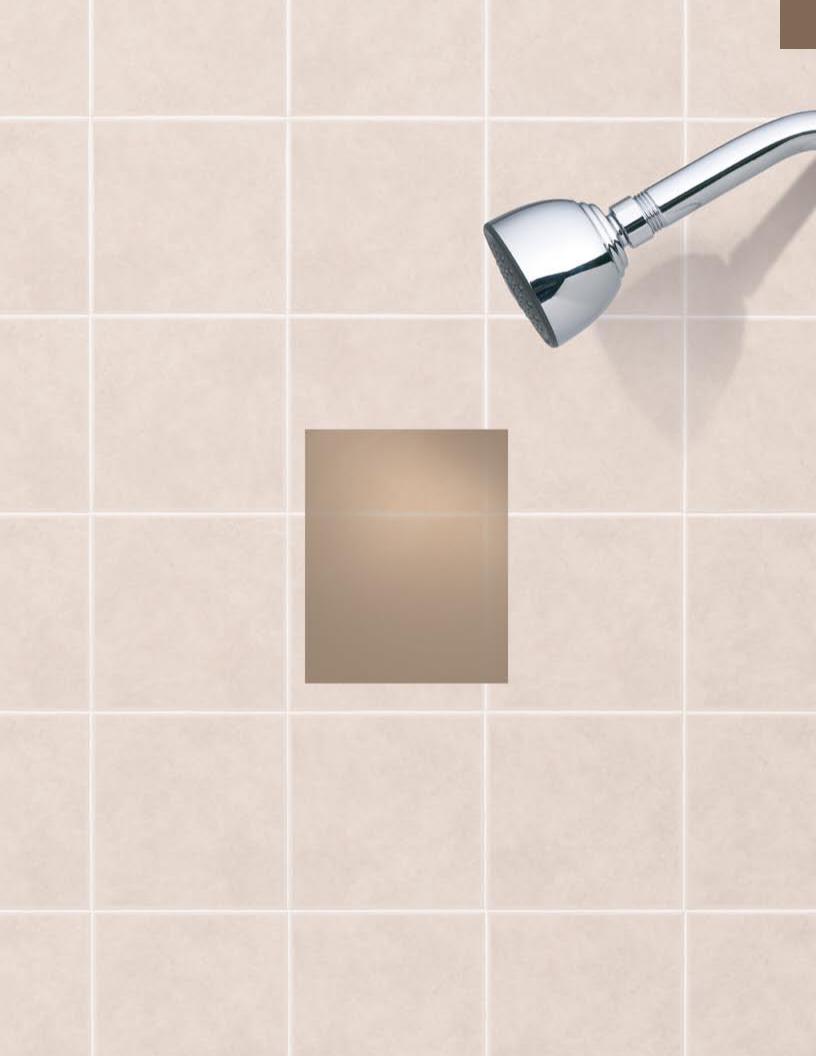
NuTone Ventilation Fans—Questions & Facts
Why do the windows and mirrors fog even when the fan is running?
If windows and mirrors are very cold, condensation can still form on these surfaces. And if your bathroom is sealed tightly, replacement air may not be entering the room fast enough to displace the moist air. Be sure to undercut your door sufficiently to draw fresh air into the room. Fan placement can also be a factor. Your fan should be located far from the replacement air source to ensure the moist air is drawn out first. Finally, too many twists and turns in the ducting will significantly reduce the ability of the blower to remove moist air. Make sure your ductwork is as short and straight as it can be, with gradual turns rather than tight corners where necessary.
Why is water dripping from the grille of the fan?
Dripping water is either condensation (usually due to cold ductwork or improper duct installation), or a problem with the seal on a wall or roof vent. Insulated ductwork can help solve condensation problems, and running the fan longer will ensure moisture is completely removed from the duct. Ductwork should slope down toward a wall vent to direct condensation out of the exterior vent opening rather than back into the fan housing.
Can I install a heater over the bathtub or in a shower?
No. Heaters are not UL Listed (Underwriter’s Laboratory) for installation over a bathtub or in a shower.
Can I use an inline or multi-port fan in one large bathroom?
Yes, this works the best for large rooms because you can install the ports over the areas where the ventilation is needed the most (source control).The size of the
multi-port would be determined by the size of the room.
Does a duct-free bath fan expel air?
No. A duct-free fan is not a ventilating device. It does not remove air from the room.
Style
Style is a curious thing.To each individual it is something different. So NuTone makes a range of unique products—some that stand out, others that blend in. But all suit every sense of style beautifully.
Can I use a smaller diameter duct than what the fan is designed for?
This is not recommended. It will cause the fan to run harder, greatly reducing the CFM performance of the fan and create excess noise.
Can larger diameter ducting be used with my bath fan?
Yes, larger diameters will result in improved performance.
What type of duct is recommended, rigid or flexible?
It is recommended, where possible, to use rigid duct. It has less resistance to air flow and allows the fan to operate much more efficiently. If flexible duct is used, be sure the duct is as straight as possible.
Can I exhaust my fan into my attic instead of out the roof or wall?
Never exhaust air into spaces within walls, ceilings, attics, crawl spaces or garages.The humidity may damage the structure and insulation.
What type of exhaust fan is best for a sauna or hot tub area?
High CFM-rated devices are normally recommended for this type of application.
Can I use a fan in a steam shower?
No. Since these are normally sealed chambers, a vacuum will be created.
Can I vent more than one bath fan out of a roof or wall cap?
No. Always follow the manufacturer’s recommended ventilation requirements.
9
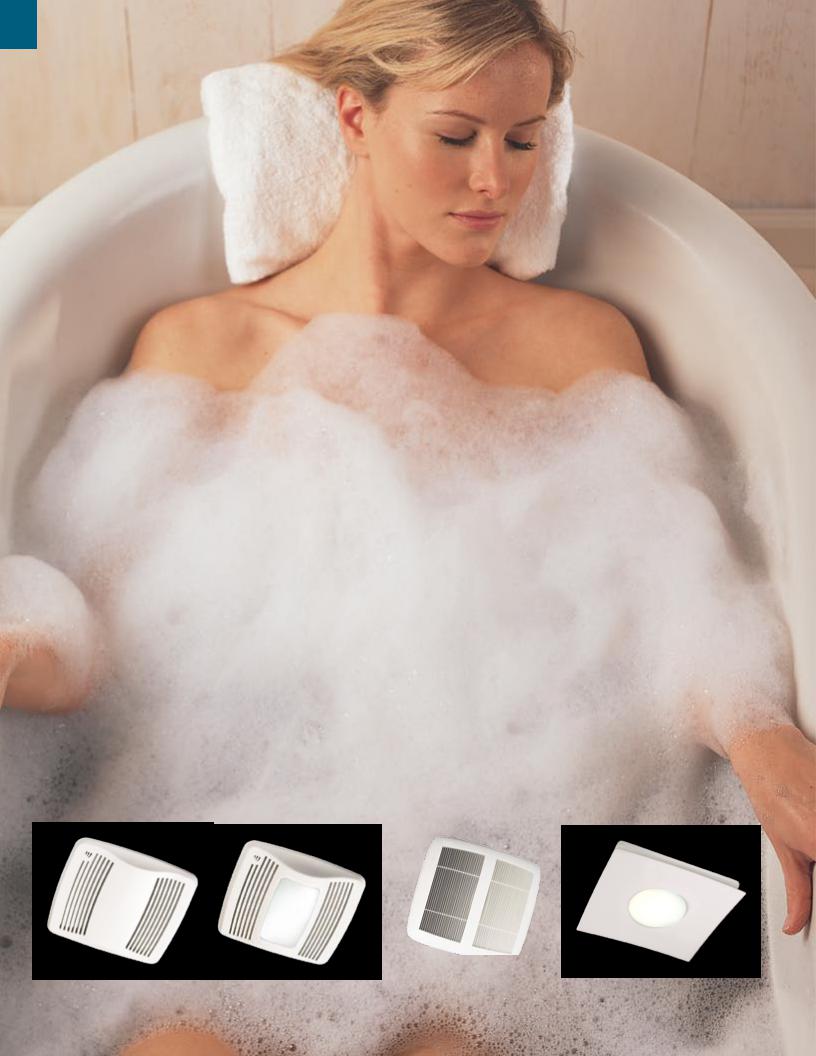
NuTone Ventilation Fans—Ultra Silent™
Model QTXEN Humidity |
|
Model QTXEN Humidity |
|
Model QTXEN Fans, page 13 |
Model QTXEN Fan/Lights, page 21 |
|
|
|
|||
Sensing Fan, page 12 |
|
Sensing Fan/Light, page 20 |
|
|
|
10
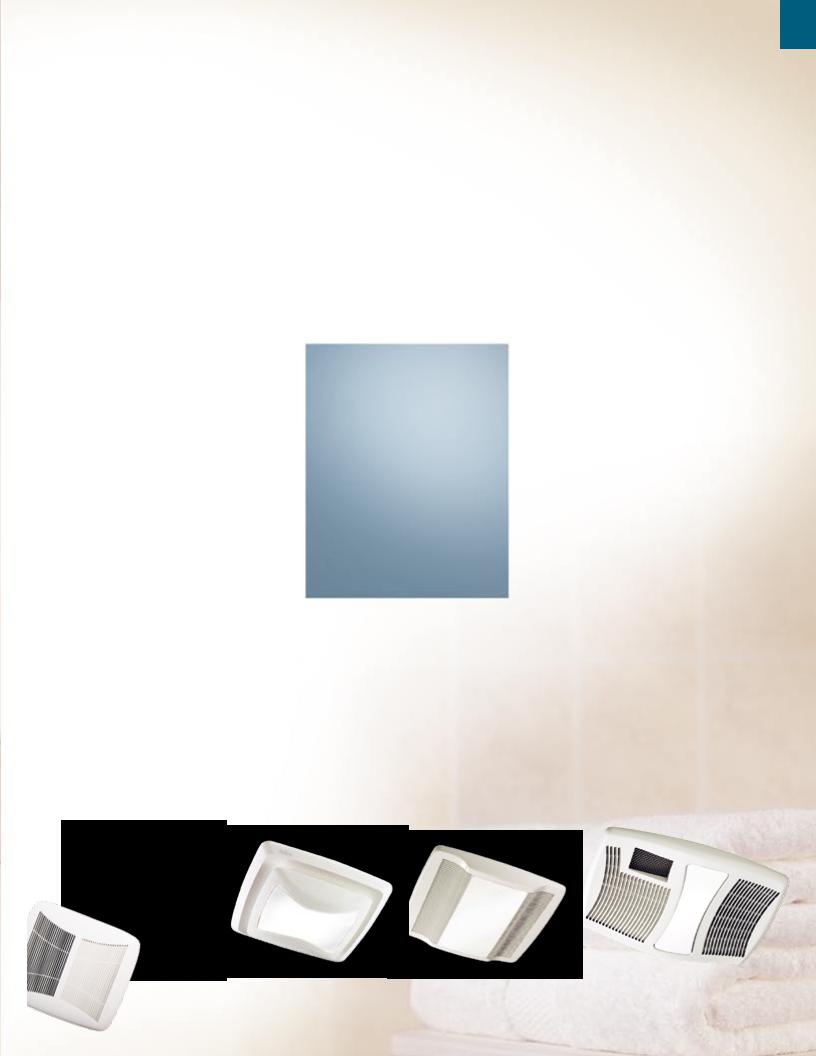
NuTone Ventilation Fans—Ultra Silent™
Quiet is good. Virtual silence is better.
The NuTone Ultra Silent™ Series.
There’s a time for noise and excitement, and there’s a time for more simple pleasures.The peaceful moment needn’t be lost simply because your bath ventilation fan is uncomfortably loud.The ultra-quiet
NuTone Ultra Silent™ Series solves everything.
Lower sones and more power.
The NuTone Ultra Silent™ Series started with a clean slate. We redesigned everything from the motor to the wheel to the housing,
all to reduce operating noise. An exciting new selection of high-style grilles will discretely complement your bathroom or make a bold
Silence
Minimizing sound is best achieved by engineering the product correctly for real-world installations. NuTone’s QTX Series is designed with efficient blowers and 6" ducting that will not restrict airflow.
design statement. Whether you choose a bath fan, a fan/light or a combination heater/fan/light,
NuTone has an ultra quiet solution for every concern.
How quiet is Ultra Quiet?
A newer refrigerator generates about 1 sone, while a normal conversation is about 2 sones.NuTone’s Ultra Silent™
Series products are as quiet as <0.3 sones.They’re the quietest fans available and deliver the power you expect for any room size.
Models QTREN and QTRN Fans, page 13 |
Model QTREN Fan/Lights, page 21 |
|
Model QTRN Fan/Lights, page 21 |
Model QTXN Heater/Fan/Light, page 26 |
|
|
|
11
